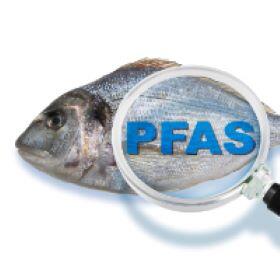Introduction
PFAS, or Per- and Polyfluoroalkyl Substances, are a group of chemicals. They have been used since the 1950s. These chemicals help make items that resist water, grease, and stains. Common items are non-stick cookware, textiles, and paper food packaging. PFAS are also used in some firefighting foams and in some industrial processes.
People can be exposed to PFAS in everyday items, such as food packaging, nonstick cookware, and water-resistant clothes. People can also be exposed to PFAS in drinking water, especially in areas with contaminated water supplies. This type of contamination often happens near certain places. For example, it can be found at industrial sites where PFAS were made or used. It can also occur in areas where firefighting foam was used, like military bases and airports. Eating fish caught in contaminated rivers, lakes, or ponds can also expose people to PFAS.
PFAS frequently asked questions
How can PFAS affect my health?
Studies of laboratory animals and people indicate that exposure to PFAS can cause adverse health effects. In humans, PFAS have been associated with increased levels of cholesterol and liver enzymes, increased risk of high blood pressure or pre-eclampsia during pregnancy, slightly decreased birth weights, and decreased response to vaccines in children. There is also evidence that long-term exposure to elevated levels of PFOA may increase the risk of both kidney and testicular cancer in humans, and that long-term exposure to elevated levels of PFOS may increase the risk of liver cancer in humans.
The chance of having health effects from PFAS depends on how much of the chemicals a person has been exposed to over time. However, the health problems linked to PFAS—such as high cholesterol or changes in liver function—can also be caused by many other things. Because of this, it’s not possible to say whether PFAS caused a person’s past, current, or future health problems.
If you're concerned about PFAS exposure and health risks, speak with your health care provider. Ask them if they have experience with environmental exposures. If your provider is not a specialist in this area, you and your health care provider can review the resource PFAS Information for Clinicians from the Agency for Toxic Substances and Disease Registry (ATSDR) together. Health care providers can contact the Massachusetts Department of Public Health (DPH) for more details about PFAS. DPH can also help them consult with providers who have training in environmental medicine.
Despite extensive research, there are still some gaps in our understanding of PFAS toxicity. Currently, scientists are still learning about the health effects of exposures to mixtures of types of PFAS, and whether effects observed in laboratory animals exposed to relatively high concentrations in controlled settings would be observed in humans.
What can I do to limit my exposure to PFAS?
If PFAS contamination has been identified in drinking water in your community, you can limit your exposure by drinking and cooking with bottled water that complies with Massachusetts drinking water standards for PFAS and other contaminants. All bottled water sold in Massachusetts is required to comply with Massachusetts drinking water standards. If you purchase water outside Massachusetts, you can contact the bottled water company to confirm that it has been tested and meets applicable drinking water standards.
To limit your exposure to PFAS in fish, DPH recommends following fish consumption advice for the specific waterbody where PFAS has been identified.
PFAS and health fact sheets
PFAS in Tap Water
Learn ways to limit your exposure if PFAS has been detected in your drinking water.
PFAS and Swimming
Find answers to common questions about swimming at public beaches where PFAS has been detected but the waterbody has been deemed safe for swimming
PFAS in Recreationally Caught Fish
Learn about PFAS in local freshwater fish and how to reduce your exposure.
Where can I learn more about PFAS
- PFAS and Your Health| ATSDRPFAS Infographic | PFAS and Your Health (ATSDR)
- PFAS Information for Clinicians (ATSDR)
- For Clinicians: Frequently Asked Questions about PFAS | PFAS and Your Health (ATSDR)
- Learn about PFAS| MassDEP
- PFAS Explained | US EPA
- Questions and answers about PFAS in Food | FDA
If you have health questions about exposure to PFAS you can contact the Division of Environmental Toxicology, Hazard Assessment and Prevention (TOX) at the DPH Bureau of Climate and Environmental Health at 617- 624-5757.


